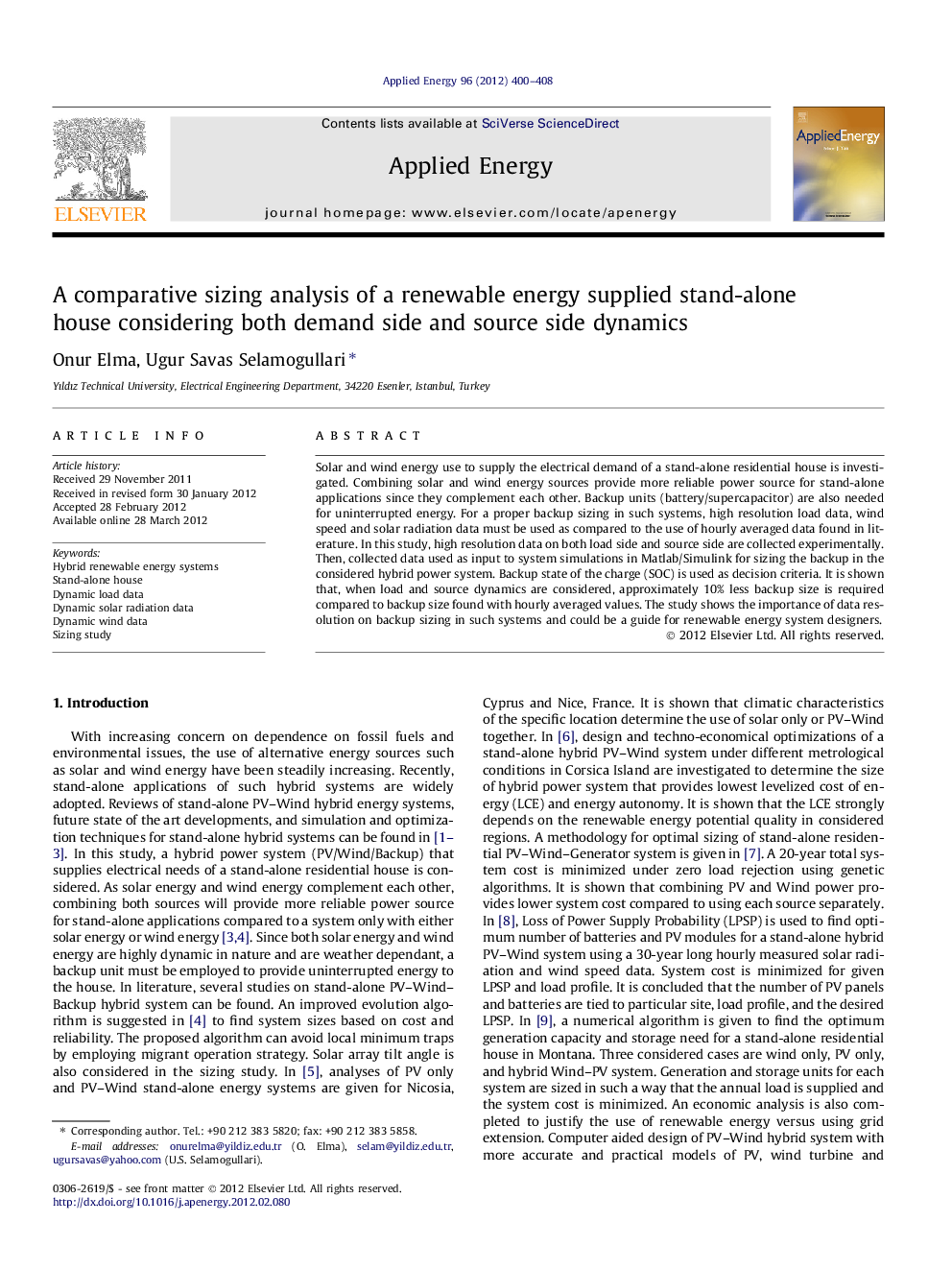| Article ID | Journal | Published Year | Pages | File Type |
|---|---|---|---|---|
| 243287 | Applied Energy | 2012 | 9 Pages |
Solar and wind energy use to supply the electrical demand of a stand-alone residential house is investigated. Combining solar and wind energy sources provide more reliable power source for stand-alone applications since they complement each other. Backup units (battery/supercapacitor) are also needed for uninterrupted energy. For a proper backup sizing in such systems, high resolution load data, wind speed and solar radiation data must be used as compared to the use of hourly averaged data found in literature. In this study, high resolution data on both load side and source side are collected experimentally. Then, collected data used as input to system simulations in Matlab/Simulink for sizing the backup in the considered hybrid power system. Backup state of the charge (SOC) is used as decision criteria. It is shown that, when load and source dynamics are considered, approximately 10% less backup size is required compared to backup size found with hourly averaged values. The study shows the importance of data resolution on backup sizing in such systems and could be a guide for renewable energy system designers.
► Backup sizing analyses for PV–Wind energy supplied stand-alone house are completed. ► Source and demand side dynamics are considered for the first time in backup sizing. ► Backup size is reduced by 10% compared to backup size found with hourly values. ► The importance of data resolution on sizing study in such systems is shown.
